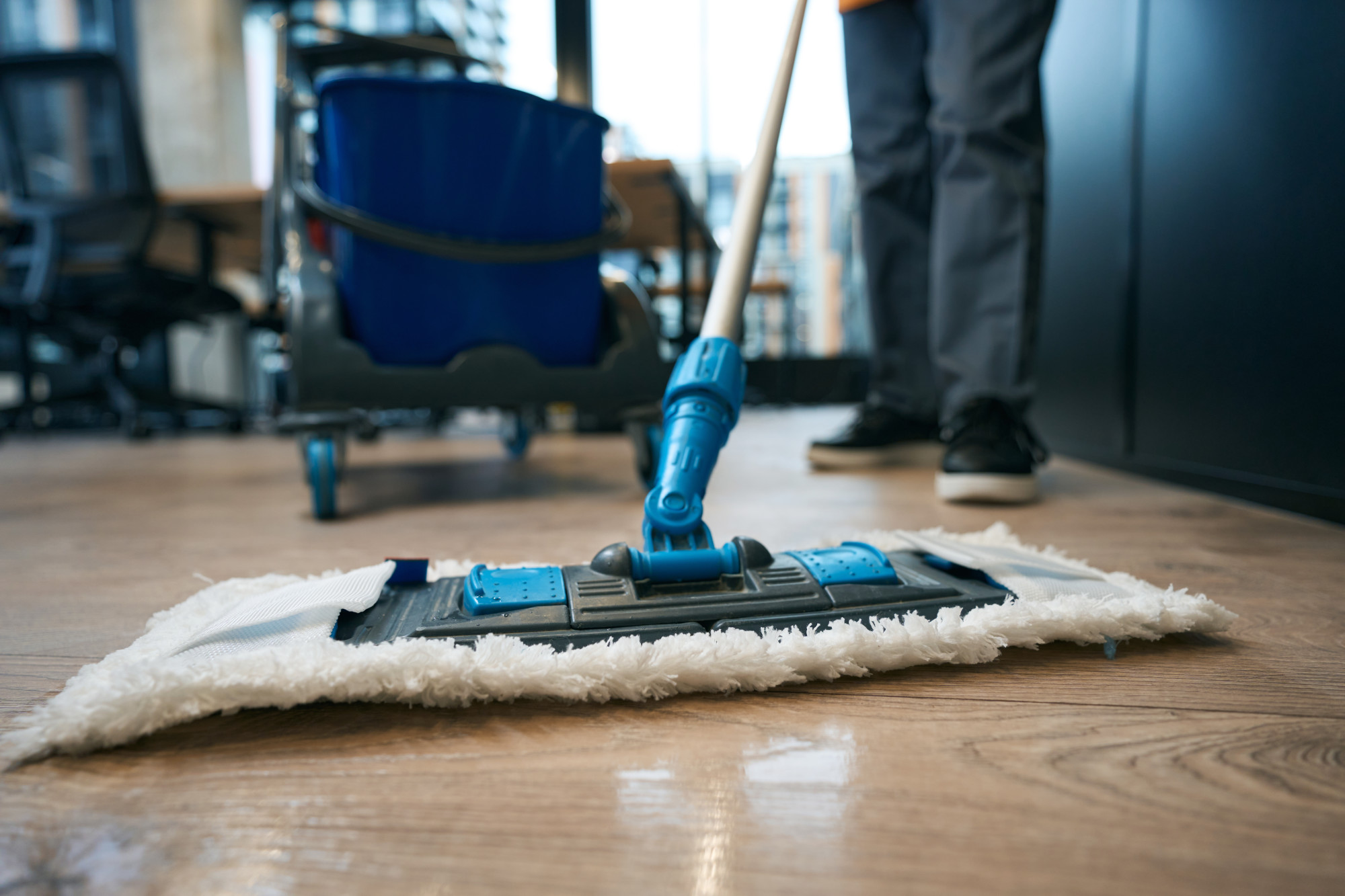Table of Contents
Table of Contents
- Step 1. Assess your business needs
- Step 2. Define your future goals
- Step 3. Chart out management duties
- Step 4. Define roles and responsibilities
- Step 5. Create your org chart
- Step 6. Assign positions and fill in the blanks
- Create the perfect organizational chart for your cleaning business
- Ready to organize your cleaning business better?
Without a perfect organizational structure, cleaning business owners will face numerous challenges. Commonly, we see that without it, companies suffer the following:
Staff wear too many ‘hats’ within the company and inevitably suffer burnout.
Communication breakdowns cause scheduling conflicts within the team.
Unclear roles result in inefficiency and unhappy employees, often leading to high turnover.
Our guide to building the perfect cleaning business organizational structure will help you delegate tasks, avoid communication issues, ensure clear roles for a productive team, and prevent some of the top mistakes for commercial cleaning businesses.
Use this guide to build an efficient and effective cleaning company.
Step 1. Assess your business needs
Conduct a thorough self-assessment of your current cleaning business structure. Identify who reports to whom, any duplicated functions, and existing communication channels.
Part of this business plan should include understanding different business legal structures, such as a general partnership, sole proprietorship, or limited liability company, and how they might impact your cleaning business.
This evaluation highlights areas that need improvement; then you can pinpoint current challenges your business faces, such as:
Communication breakdowns causing delays or errors
Unclear roles that lead to confusion and inefficiency
Employee overload resulting in burnout and reduced productivity
Inefficient processes that waste time and resources
Understand these issues to create a more effective organizational structure. Evaluate these key aspects:
Reporting Lines: Identify who is responsible for what.
Duplicated Functions: Determine if there are any redundant roles.
Communication Channels: Analyze how team members communicate.
Workload Distribution: Check if tasks are evenly distributed.
Next, we’ll define your future goals to shape your organizational structure effectively.
Step 2. Define your future goals
Consider your ideal future goals for your cleaning business.
Will you expand into new service areas, such as specialty cleaning services, or increase your customer base by targeting a new market segment?
You might also aim for greater operational efficiency, like reducing cleaning time per site to improve productivity.
Align your future goals with potential structural changes:
Expansion: If you plan to expand, consider departmentalization to handle different service areas effectively.
Customer Base Growth: If you are targeting new market segments, create specialized teams to address each segment’s unique needs.
Operational Efficiency: Streamline cleaning crew operations to reduce time spent per site and increase overall productivity.
Next, evaluate how each goal impacts your organizational structure and what changes are necessary to support these goals. Expanding the list above, consider the following:
Expansion into new service areas:
Create specialized departments for different cleaning services. For example, a house cleaning or janitorial team.
Hire or train staff with expertise in these new service areas.
Consider forming a limited liability company (LLC) for its benefits, such as protection from personal liability and a flexible management structure.
Increasing your customer base:
Develop marketing strategies to target new customers.
Form dedicated sales teams to focus on different markets. For example, commercial cleaning or home cleaning.
Boost your customer service training amongst your employees to retain and grow your client base.
Achieving operational efficiency:
Implement efficient cleaning processes and use advanced cleaning tools.
Optimize staff schedules to reduce downtime and improve service delivery.
Monitor performance metrics to continuously improve operations.
By aligning your organizational structure to support your future goals, you ensure you have the right people in the right positions. Clear roles and responsibilities help everyone avoid confusion, improve communication, and increase efficiency.
Setting clear goals and aligning your structure accordingly creates a solid foundation for growth and success.
Next, let’s chart out management duties to ensure effective delegation and leadership within your cleaning business.
Step 3. Chart out management duties
When breaking down the core management duties within your cleaning business, remember to focus on the operations, sales and marketing, and administration departments.
In several business structures, such as a general partnership, each partner brings unique strengths to the business entity you may not have. For example, one partner may excel in sales but not manage people well (operations).
Consider the number of people you need and their specific roles, and create common-sense divisions in your cleaning company. Even if you start by doing everything yourself as a sole proprietor, plan for future delegation.
Operations
Crew Scheduling: Ensure all cleaning crews are effectively scheduled for optimal coverage and efficiency.
Quality Control: Monitor and maintain high cleaning standards across all job sites.
Training Programs: Develop and implement training programs to enhance the skills of your cleaning staff.
Supply Management: Oversee the procurement and management of cleaning supplies and equipment.
Sales & Marketing
Lead Generation: Implement strategies to attract potential customers for residential cleaning services and generate new business leads.
Customer Service: Provide excellent service to maintain and grow customer relationships.
Retention Strategies: Develop programs to retain existing clients and encourage repeat business.
Develop New Services: Respond to customer feedback on desired services and pricing and develop marketing strategies like SEO and social media.
Administration
Finance: Manage all financial activities, including budgeting and forecasting. Proper financial management is key to minimizing personal liability, especially in business structures where personal assets might be at risk.
Accounting: Handle accounts receivable, accounts payable, billing, collections, tax returns, and payroll.
Human Resources: Oversee the hiring, training, employee relations, and compliance with labor laws.
Payroll: Ensure timely and accurate payroll processing for all employees.
By clearly defining and assigning these management duties, you can ensure that every aspect of your cleaning business runs smoothly and efficiently.
Next, let’s define roles and responsibilities to ensure everyone knows their specific duties and how they contribute to the business’s overall success.
Step 4. Define roles and responsibilities
Translate the core management duties identified in the previous step into specific roles and responsibilities for each department.
Having a clear partnership agreement is crucial in defining roles and responsibilities within a partnership structure.
Operations
Define roles such as Cleaning Crew Leader, Quality Control Inspector, and Training Coordinator.
Cleaning Crew Leader: Schedule and oversee cleaning crews to ensure efficient operation in residential homes, thoroughly cleaning every room and corner.
Quality Control Inspector: Conduct quality checks to maintain high cleaning standards.
Training Coordinator: Develop and implement training programs for new hires to ensure they meet company standards.
Sales & Marketing
Identify roles like Lead Generator, Account Manager, and Customer Service Representative.
Lead Generator: Implement strategies to attract and generate new potential clients for different cleaning service contracts.
Account Manager: Manage client relationships to ensure satisfaction and retention.
Customer Service Representative: Handle customer inquiries and complaints, providing excellent service to enhance client experience.
Administration
Define roles such as Bookkeeper, Payroll Specialist, and HR Manager.
Bookkeeper: Manage finances and accounting tasks, including billing, accounts receivable, and accounts payable. Understanding the Internal Revenue Code is crucial for managing tax-related activities effectively.
Payroll Specialist: Ensure timely and accurate payroll processing for all employees.
HR Manager: Oversee employee recruitment, onboarding, performance reviews, and compliance with labor laws.
By clearly defining and assigning these roles, you ensure that each department operates efficiently and that responsibilities are clearly understood and executed.
Next, create your organizational chart to visually represent these roles and responsibilities within your cleaning business.
Step 5. Create your org chart
Create a chart to visualize your organizational structure. This will help clarify roles and ensure everyone understands the hierarchy within your cleaning business.
Use a hierarchical format to represent your business structure:
Top-Level Management: Place the highest-level management position (e.g., Owner/CEO) at the top.
Departments: Branch out from this central position into Operations, Sales & Marketing, and Administration.
Map management roles within each department:
Operations Department: List roles such as Cleaning Crew Leader, Quality Control Inspector, and Training Coordinator.
Sales & Marketing Department: Include roles like Lead Generator, Account Manager, and Customer Service Representative.
Administration Department: Add roles such as Bookkeeper, Payroll Specialist, HR Manager, and limited partners, highlighting their specific responsibilities and positions within the organizational chart.
Consider using software or templates to create your chart. Online tools and organizational chart templates can help you visually represent the structure easily and professionally.
Maintain clarity and simplicity in your chart.
Focus on the core structure and avoid cluttering with excessive detail. A clear and straightforward organizational chart ensures everyone understands their place within the company.
Next, assign positions and fill in the blanks to ensure every role is covered and responsibilities are clearly defined.
Step 6. Assign positions and fill in the blanks
Populate your organizational chart by assigning existing employees to the identified management roles based on their skills and experience.
Then, identify gaps where new hires might need to fill specific roles.
When just starting out, your name might appear in most slots, especially if you don’t have enough staff yet.
This is okay because a plan for future growth is crucial. A sole proprietor or startup will likely be the sole employee for small cleaning businesses.
Some key points to consider:
Evaluate current staff to see if they fit the roles on your chart without being overwhelmed.
Ensure there is room for employee advancement to prevent turnover.
Explain that initially, positions may not come with higher pay or be full-time; small businesses need flexibility and multiple staff to wear many hats.
Avoid keeping all tasks you enjoy and delegating only undesirable tasks. Your CEO time is valuable and should focus on high-level management and growth strategies.
Assign roles carefully:
Match Skills and Experience: Ensure employees are well-suited for their assigned role.
Identify Gaps: Determine which roles need new hires to cover all positions.
Communicate Clearly: Explain your employees' responsibilities and expectations for each role.
By populating your organizational chart, you create a clear roadmap for current operations and future growth. This structure allows you to manage your cleaning business more effectively, ensuring everyone knows their role and responsibilities.
Create the perfect organizational chart for your cleaning business
Building a strong organizational structure is essential for the success of your cleaning business.
Start by assessing your current business needs and pinpointing any challenges. Small business owners should define their goals to align with potential structural changes.
Chart out management duties and create an organizational chart to visualize your structure. Assign positions based on skills and experience, filling in gaps with new hires.
Choosing a business structure with limited liability can protect against personal liability and support business growth. Following these steps ensures your cleaning business's clarity, efficiency, and growth.

Ready to organize your cleaning business better?
Aspire is the only end-to-end business management system for growing commercial cleaning services and entrepreneurs, providing visibility into every aspect of their operations.
Armed with real-time data accessible via custom reports and dashboards and accurate, immediate job costing, cleaning businesses can make timely, informed decisions that dramatically improve sales, productivity, accountability, and profits, thus increasing the value of your own cleaning business.
Book a free demo with Aspire to see how our tools can help you.










